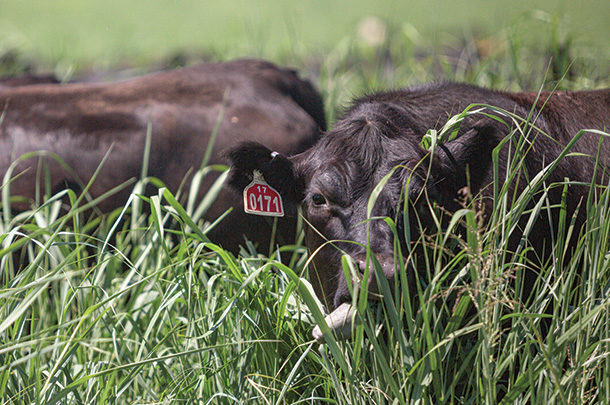It’s become that time of year when most cattle producers feel like they can finally relax.The nutrient concerns that consume winter dormancy and the early spring green-up have long passed, feed trucks are put away, and calves have all dropped and are on their feet and grazing right alongside Mom. The summer grasses are coming on strong – oftentimes stronger than we may like.
It’s a dramatic change, going from struggling to manage stockpiled forage to managing the sudden burst of growth many summer annuals and some perennials are experiencing. It can be overwhelming, and it’s not uncommon to hear “I can’t stay ahead of my grass.” Later, that problem leads to “I need more cattle to manage all of my grass” or even “Look at all that wasted grass.”
If this is the case with many annuals, such as a cover crop, then go ahead and use a temporary class of livestock, like stockers, to utilize what you have. Such is not the case, however, for summer perennials, like diverse native landscapes or even bermudagrass pastures.
If a producer has the “wasted grass” perspective, they won’t have that complaint for long. Getting rid of “wasted grass” has dire consequences. Overconfidence in the flush of high yields of forage during the growing season can quickly lead to overstocking, overgrazing and the general detriment of your grazing lands.
Dispelling the myth
There is no such thing as “wasted grass.” Don’t ever feel obligated to harvest all of your forage yield, whether mechanically or with livestock.
Excess forage is something to be thankful for, not remorseful about. That excess forage provides thatch to help armor and protect the soil and helps to prevent runoff and erosion.
When more than 50% of a plant is harvested (by grazing or mechanically), it dramatically stunts root growth, which is imperative to healthy soil and proliferation of your forage.
Simply put: If you make quick use of all of that “wasted grass,” you’ll find yourself in a predicament with far less forage at your disposal in a matter of years – especially when it comes to native grass pastures. From a livestock perspective, grazing your pastures to lower heights can contribute a great deal to parasite load in your livestock.
A different perspective
If you’re grazing forage with rapid summer growth that has a tendency to get overly grown ahead of your cattle, change your idea of what your goals are for those pastures.
Rather than utilizing 50% or more of that early or midgrowth, consider just “taking the top off,” or grazing just the top one-third of that pasture and then moving on to the next. Moving more rapidly through pastures right now ensures that your cattle are getting the high-nutrient picks of the forages but are moving on quick enough to take advantage of the next area before it gets overgrown, mature and unpalatable.
This may mean stringing some electric fence to make smaller pastures you can get more controlled, uniform grazing in.
Grazing more quickly through smaller pastures encourages less grazing selectivity of diverse pastures and helps preferential species to recover and thrive as opposed to those species being grazed repeatedly while less-preferred species grow rank, go to seed and proliferate. This encourages diversity, which benefits the soil, plants and livestock.
Keep it around
When managed properly, productive summer pasture can help you reduce winter feed costs by strategically stockpiling.
Consider that, in the Great Plains, by the conclusion of June you will have grown about 70% of your forage for the year. If you make quick use of all that forage before fall hits, what does that leave you with for the remainder of the year?
The number one cost associated with maintaining a cow is feed, and a great majority of that feed cost can often be attributed to hay.
Keep your perennials vegetative for as long as you can by grazing as much of it as lightly as you can, and try to time the grazing of some of your pastures so the nutrient-dense regrowth is locked in by frost, serving as desirable “standing hay” for dormant months.
Don’t be resentful of excess forage right now. Be thankful for it and learn to manage it to your benefit.











